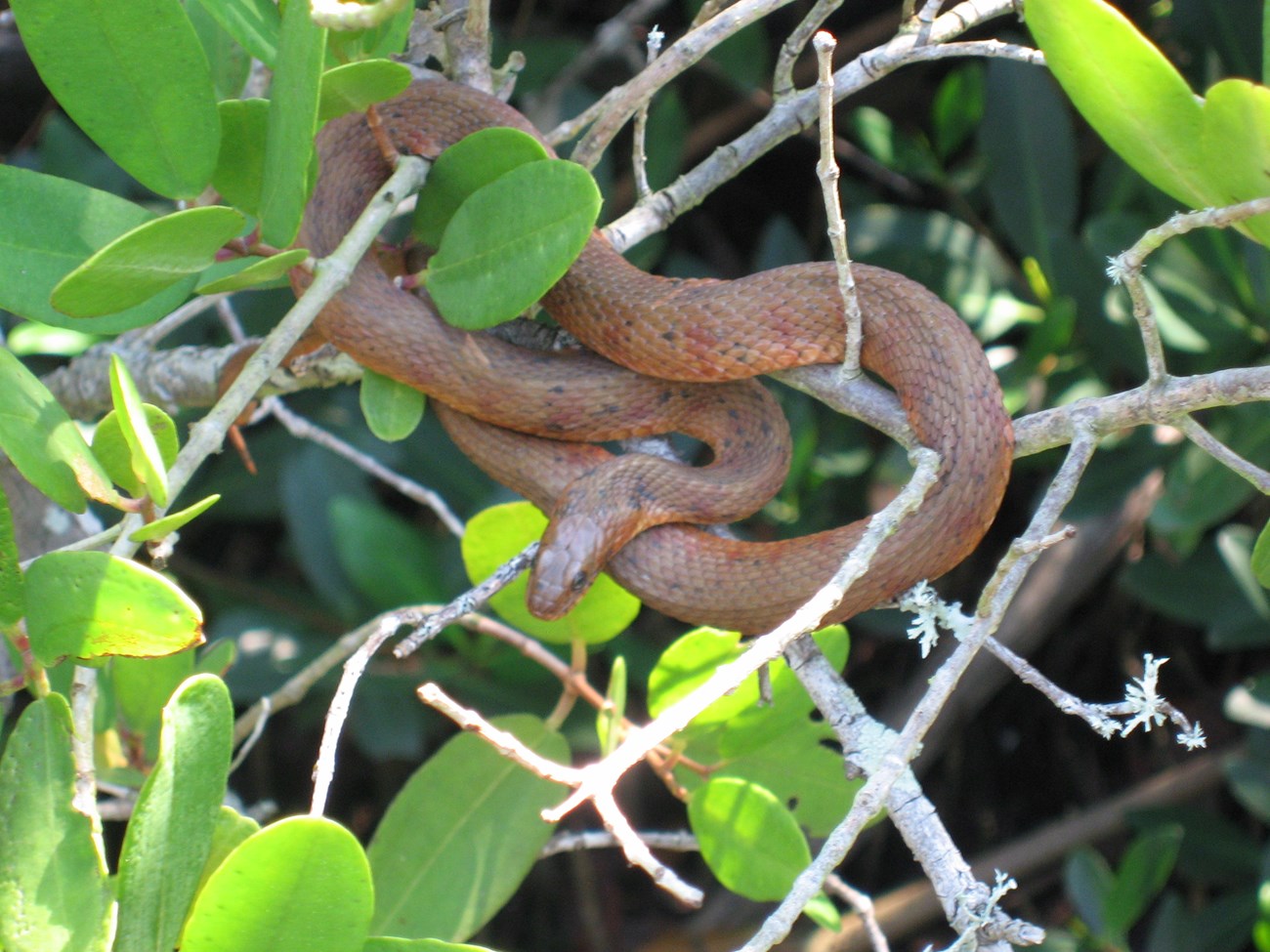
Deso photo The coastal location of De Soto National Memorial and the combination of aquatic and upland forested habitats attract a wide variety of wildlife. Mammals and butterflies are found in interior habitats, amphibians and fish in wetland areas, and reptiles in both interior and wetland habitats. Birds are the most significant fauna of the site, commonly observed in the aquatic, as well as upland, areas of the park. Invertebrates, particularly fiddler crabs, are common species of the park’s mangrove swamp. Since many of the park’s mammal species are nocturnal, including the raccoon, opossum, armadillo, and grey fox, it is unlikely to spot them during the day. The park’s reptiles are also often elusive. Among the species sometimes observed in the park, the gopher tortoise finds its home in the pine flatwoods area of the park’s interior, while the most common reptile in the park, the brown anole, is actually an exotic from Cuba. Due to the variety of habitats, birds are probably the most visible wildlife in the park. Bald eagles are occasionally observed fishing offshore in the Manatee River. Brown pelicans may also be viewed offshore throughout the year and, in winter months, are sometimes joined by American white pelicans and common loons. This marine habitat also attracts a variety of gulls, terns, and shorebirds whose species change with the seasons. Snowy, reddish, and great egrets are frequently found along the park’s shoreline or feasting on invertebrates in the mangrove forest, as are great blue, little blue, and tricolored herons. Occasionally, the endangered wood stork may be observed feeding in the mangroves as well. The richness of upland vegetation also provides habitat for many bird species. Although more difficult to observe in these forested areas, a wide range of warblers, gnatcatchers and flycatchers reside there in winter months. |
Last updated: September 13, 2022
